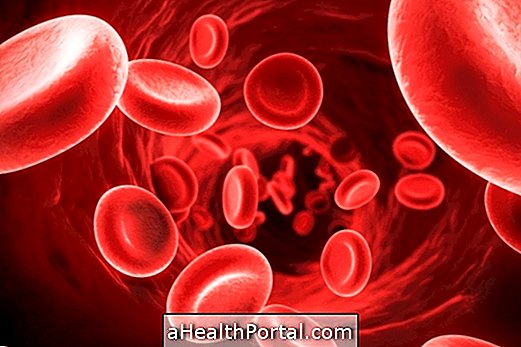General anesthesia acts to sedate a person deeply, so that the body's awareness, sensitivity and reflexes are lost so that surgeries can be performed without pain or discomfort during the procedure.
It can be injected into the vein, having an immediate effect, or inhaled through a mask, into the bloodstream after passing through the lungs, and the duration of its effect is determined by the anesthesiologist, who decides what type, dose and amount of the anesthetic drug.
However, general anesthesia is not always the first choice for surgeries and is reserved for those longer and longer surgeries, such as the abdominal, thoracic or cardiac. In other cases, anesthesia of only part of the body, such as the local one, may be indicated in cases of dermatological surgery or removal of teeth, or epidural anesthesia, for births or gynecological surgeries, for example. Learn about the major types of anesthesia and when to use it.

Main types of general anesthesia
Anesthesia can be done by vein or by inhalation, and there is not one type better than the other, and the choice will depend on the potency of the drug for the type of surgery, anesthetic preference and hospital availability.
There are several types of medications used, which are usually combined to make the person unconscious, insensitive to pain, muscle relaxation and amnesia, so that everything that happens during surgery is forgotten by the patient.
1. Inhaled anesthesia
This anesthesia is made by inhaling gases that contain anesthetic drugs, so it takes a few minutes to take effect because the medication passes through the lungs until it reaches the bloodstream and then into the brain.
The concentration and amount of the inhaled gas is determined by the anesthetist, depending on the time of surgery, which may be from a few minutes to several hours, and the sensitivity of each person to the drug.
To cut off the effect of anesthesia, you must stop the release of gases with the medicine, the body eliminates the anesthetics that are in the lungs and in the bloodstream, through the liver or kidneys.
- Examples : some examples of inhalational anesthetics are Tiometoxiflurane, Enflurane, Halotane, Diethyl ether, Isoflurane or Nitrous oxide.
2. Vein anesthesia
This type of anesthesia is done by injecting the anesthetic drug directly into the vein, causing almost immediate sedation. The depth of sedation depends on the type and amount of medicine injected by the anesthesia, which will also depend on the length of surgery, the sensitivity of each person, as well as age, weight, height and health conditions.
- Examples : examples of injectable anesthetics include Thiopental, Propofol, Ethidomidate or Ketamine. In addition, the effects of other drugs can be harnessed to potentiate anesthesia, such as sedatives, opioid analgesics or muscle blockers, for example.
How long does anesthesia last?
The duration of anesthesia is programmed by the anesthesiologist, depending on the time and type of surgery, and the choice of medication used for sedation.
The time it takes to wake up takes a few minutes to a few hours after the end of the surgery, different from the ones that were used in the past, which lasted the whole day, since nowadays, the medicines are more modern and efficient. For example, anesthesia done by the dentist has a very weak dose and lasts for a few minutes, while the anesthesia required for heart surgery can last for 10 hours.
For any type of anesthesia, it is important that the patient is monitored with devices to measure heart rate, blood pressure and respiration because, since sedation can be very deep, it is important to control the functioning of vital signs .
Possible Complications
Some people may have side effects during anesthesia or even a few hours later, such as nausea, vomiting, headache and allergies to the active ingredient in the medication.
More serious complications, such as stopping breathing, cardiac arrest, or neurological sequelae, are rare but may occur in people with poor health, malnutrition, heart, lung or kidney disease, and who use many drugs or illicit drugs, for example. example.
It is even more rare for anesthesia to have a partial effect, such as taking away consciousness, but allowing the person to move, or even vice versa, when the person can not move, but can feel the events around him.
























